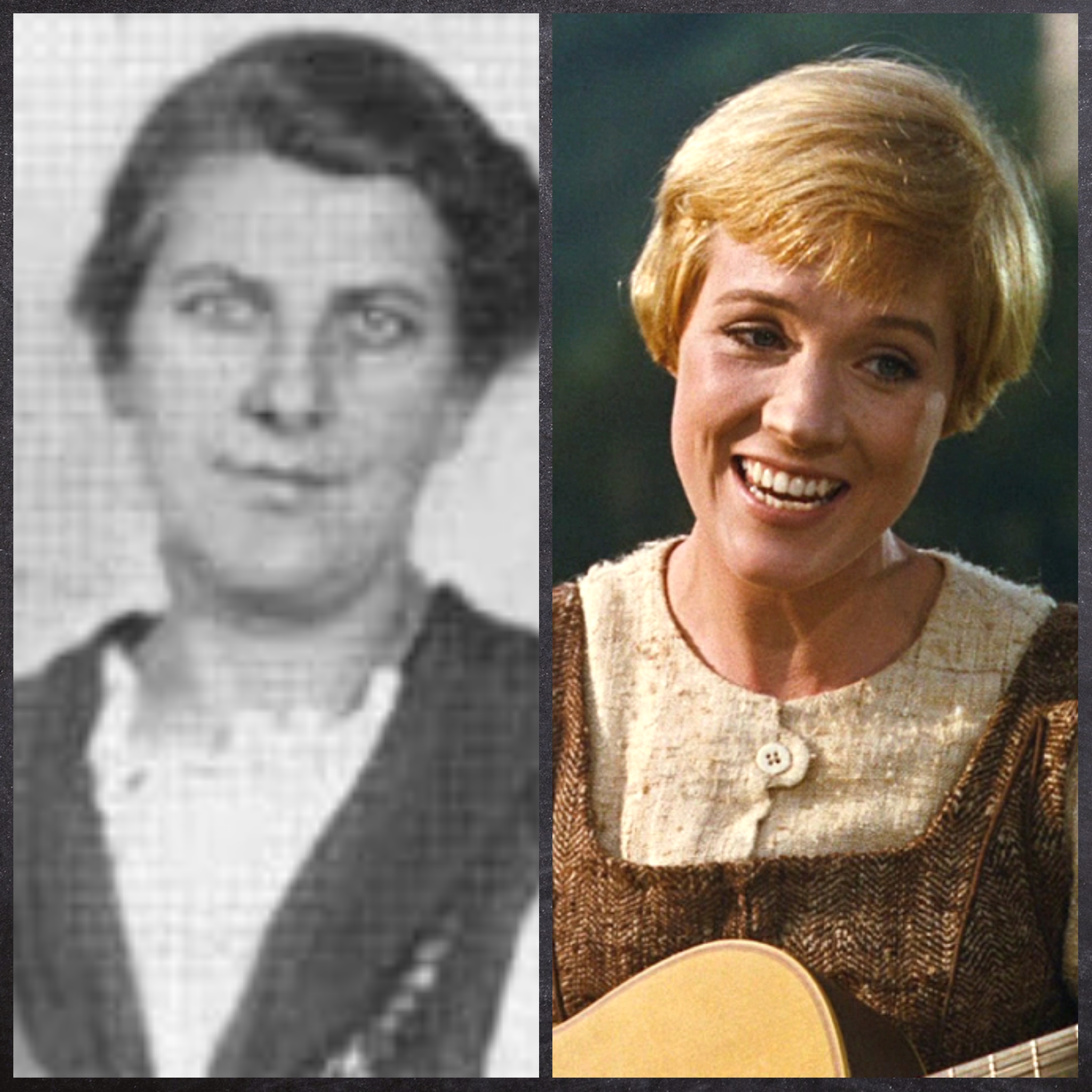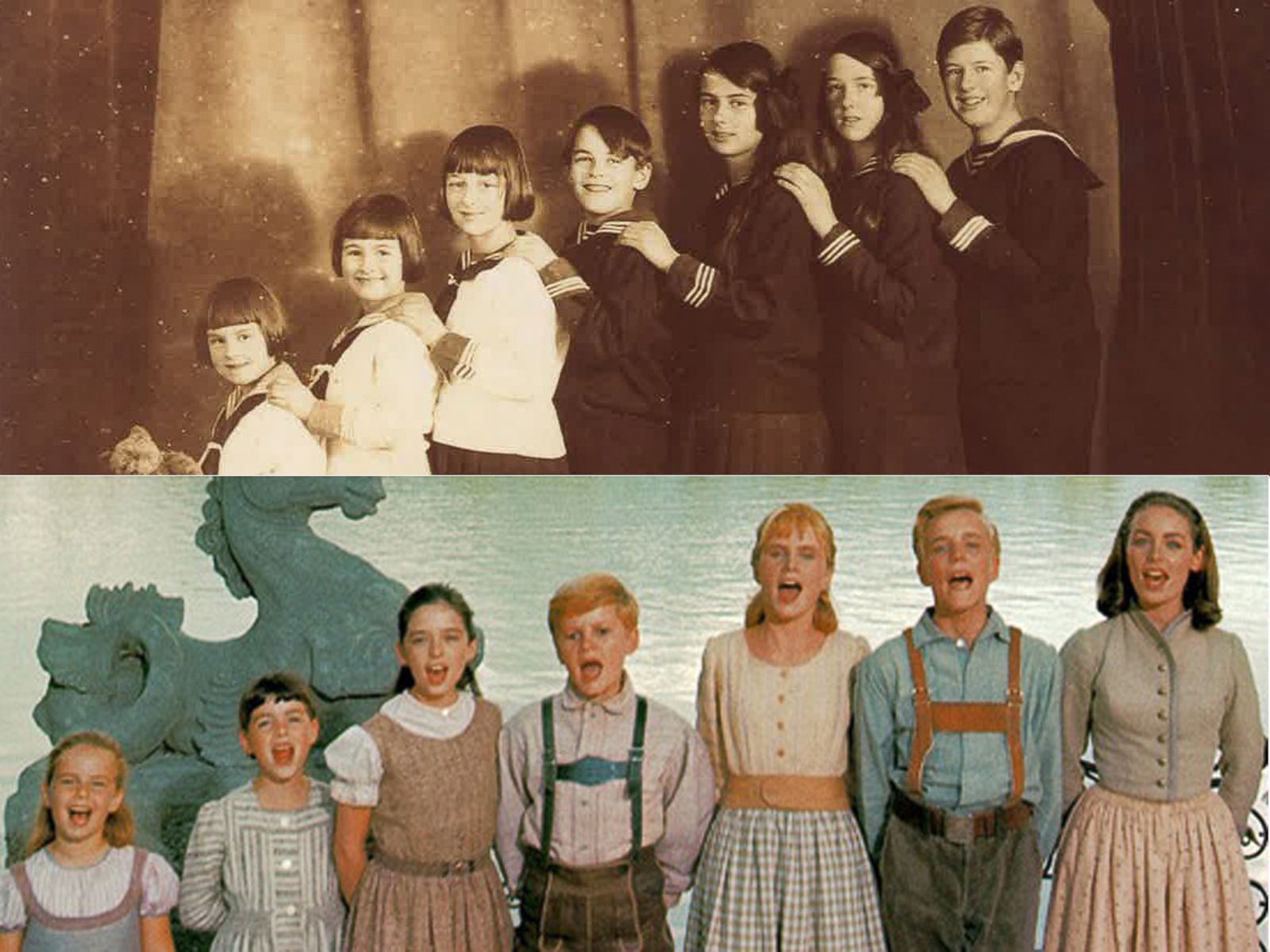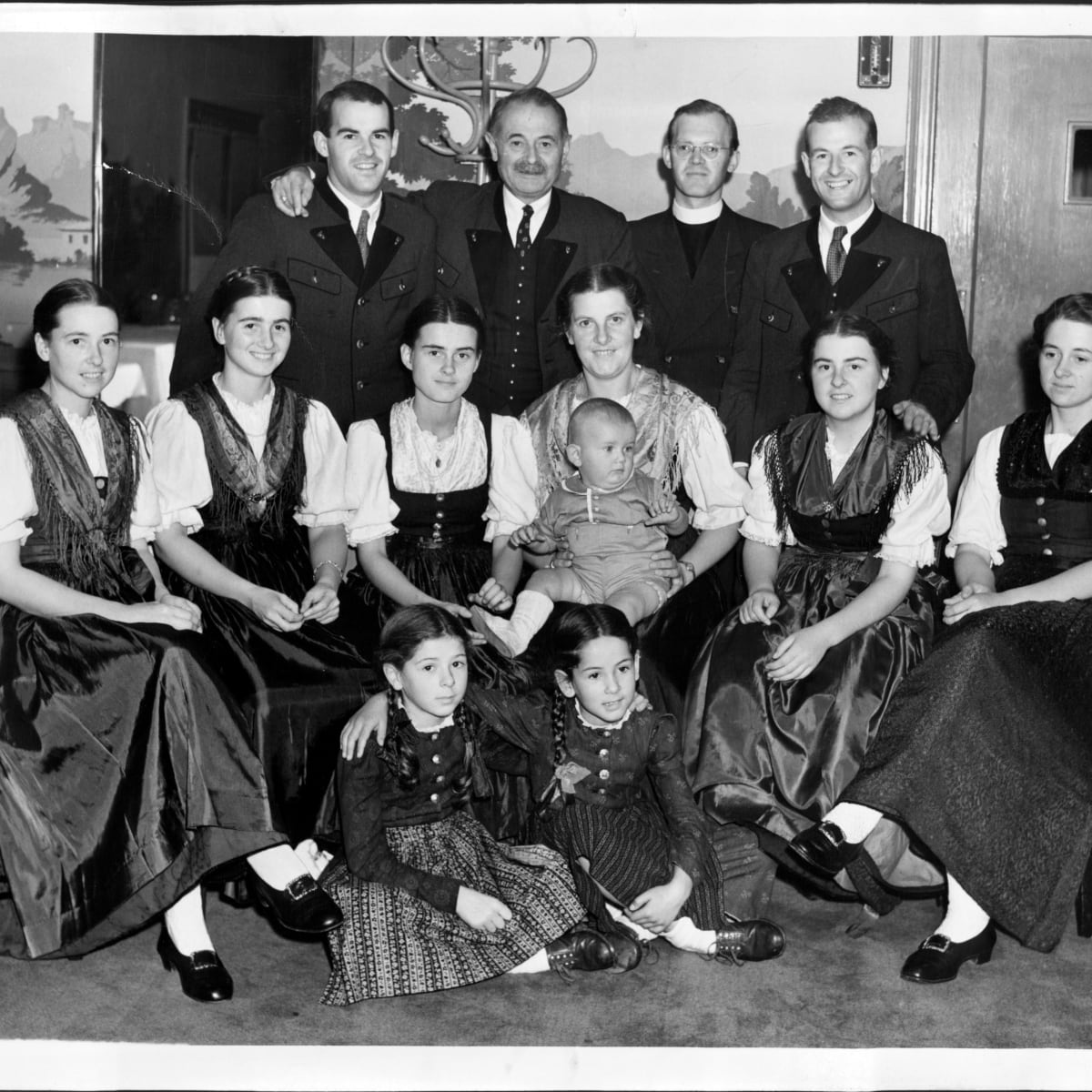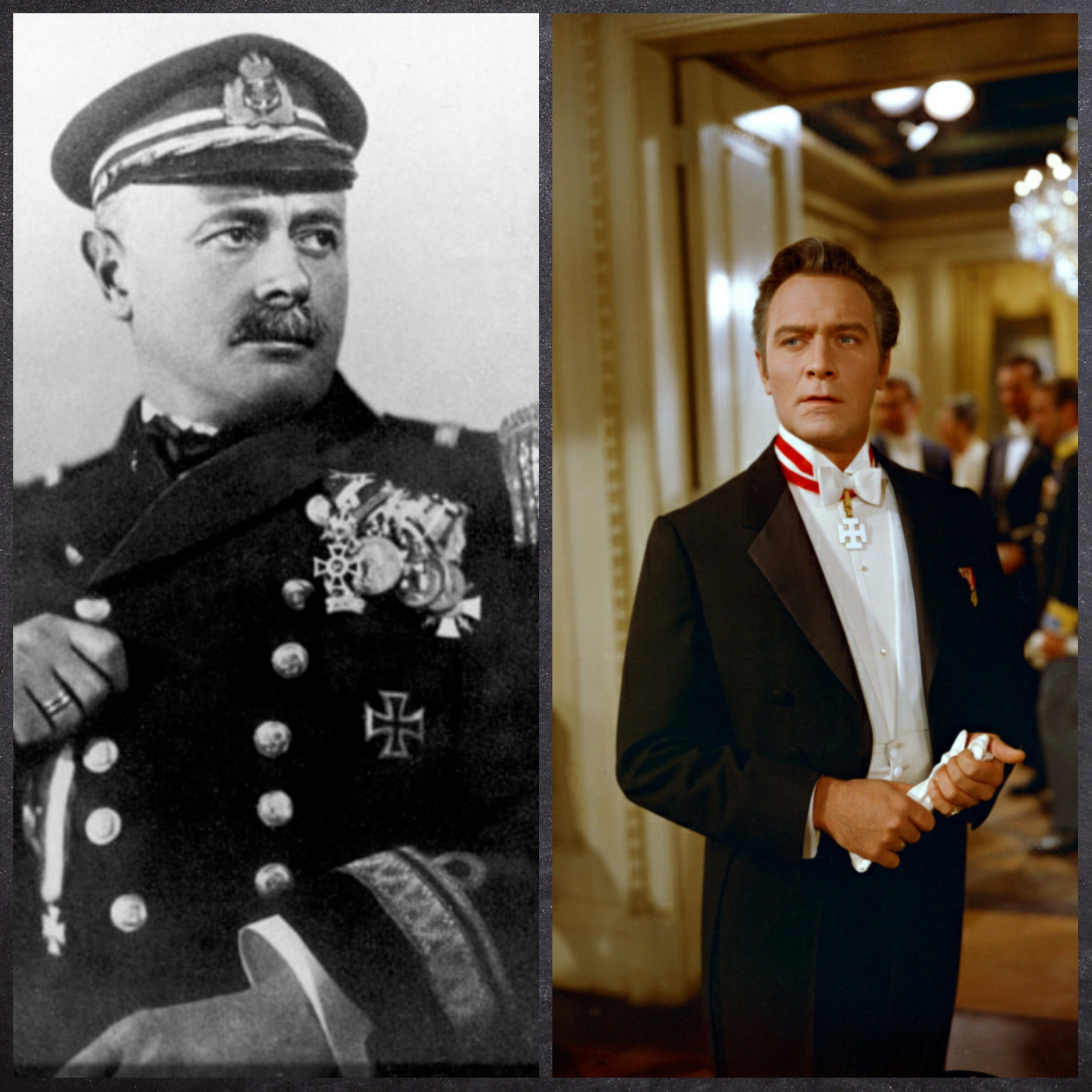It seems I’m in the mood to pick apart the history behind musicals. Normally, that’d fall into the ‘Everything wrong with…’ series but I have neither the inclination or the audacity to suggest that something is ‘wrong’ with The Sound of Music (1965) despite it’s many and frequent deviations from the story of the actual Trapp family. So instead, we’re just going to have a casual look at the history that surrounds one of the most famous musicals of all time.
It might be news to you that it’s even based on a true story. While I was preparing this piece, the question I was asked most by the people around me was ‘is Maria von Trapp a real person?’ Indeed, she is! She penned five books about the life of the Trapp Family Singers, four of which were published before The Sound of Music was released as a film. The Broadway musical was first performed in 1959, based off Maria Trapp’s first book The Story of the Trapp Family Singers published in 1949.
The film is one of the most popular, successful, and enduring musicals of all time, and it’s probably because it’s success far outstripped the fame of the actual Trapp family that people think they’re fictional at all.
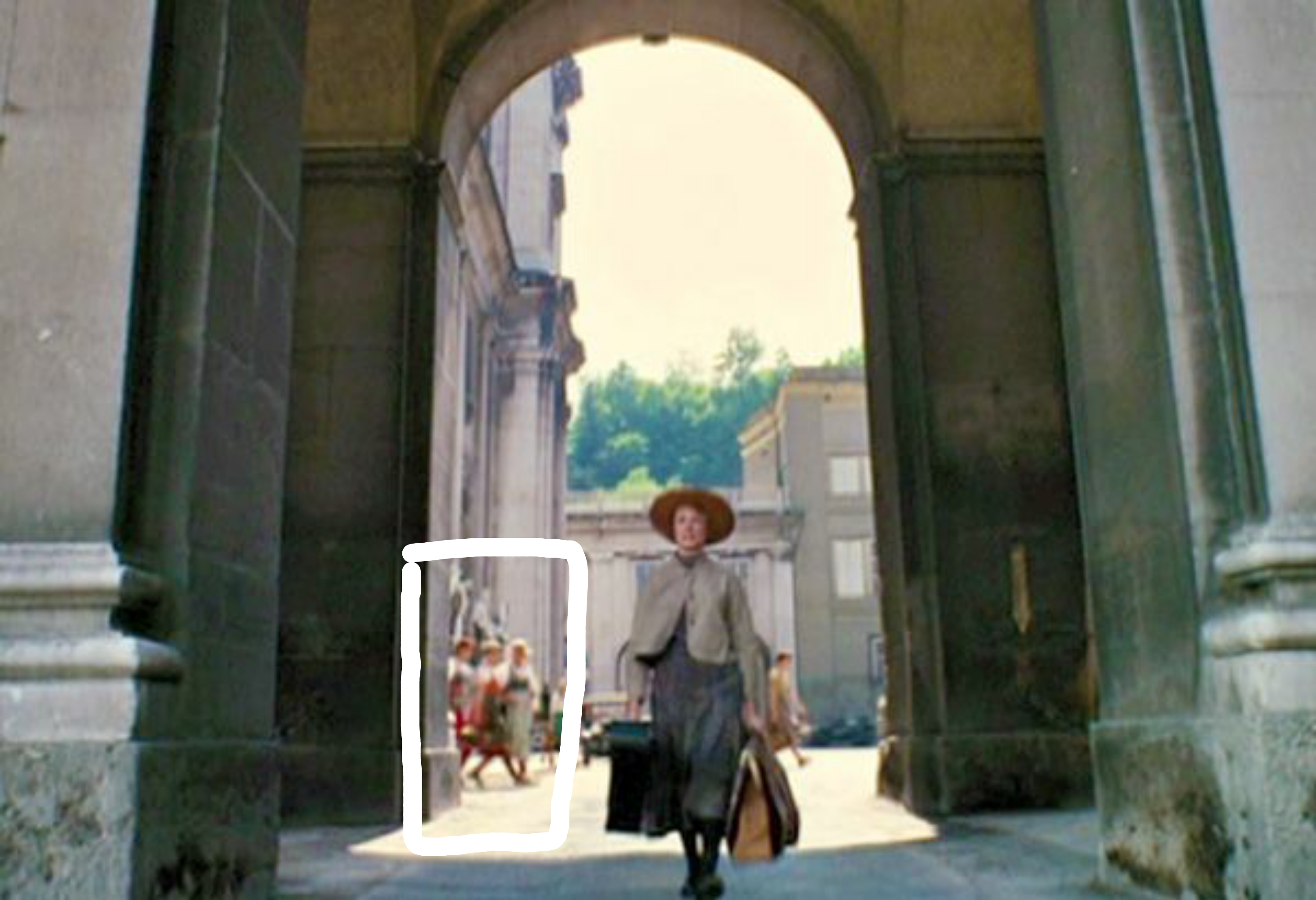
The story is set in 1938 and follows Maria, a novice at an Austrian convent who is hired as a governess for the seven children of Captain Georg von Trapp. She arrives to find a stern and unyielding man keeping his home as he would one of his ships. While Captain von Trapp leaves to visit his love interest, Baroness Schraeder, the high spirited Maria introduces the children to fun, games, and above all, music.
The Captain returns with the Baroness to find his family changed and he realizes that Maria was right all along [dramatic gasp], and he resolves to be a better father to his children. He and Maria fall in love much to the Baroness’ chagrin and she engineers for Maria to return to the convent in secret. Maria is convinced to return and face the fact that she’s in love, only to find that the Captain and the Baroness are engaged. Or at least they are until that evening, when the Captain tells her to politely jog on and proposes to Maria.
Their honeymoon is cut short by the unification of Austria and Germany (the Anschluss) bringing Austria into the Third Reich. The Captain and Maria return to find that he has been invited to serve in the navy but he cannot bring himself to join the Nazi party. Knowing that refusal will put the entire family in danger, they resolve to escape to Switzerland and the safety of neutrality. They leave under the cover of darkness but gasp! The Nazis are waiting for them! The Trapp family evades them by performing at the Salzburg Folk Festival. In one of the more iconic scenes in film history, the Trapp family win first place at the festival but have disappeared during the judge’s deliberation. With the help of the nuns at Maria’s abbey they manage to hide themselves. They discover that the Nazis have closed the border and they have no avenue of escape. Undeterred, they head into the Alps and cross into Switzerland, escaping the Nazis and beginning their new life.
The story is practically a fairy tale with the love story between the Captain and Maria, the backdrop of the Austrian mountains is dramatic, and the Nazi party cast a shadow over the idyllic proceedings. The real story of the family isn’t quite as mythical but it is based in historical events. But how much? Let’s find out!
Maria: Maria Augusta Kutschera
According to the eldest of the Trapp daughters, Agathe (Liesl in the film), the song Maria and it’s implications was the most accurate element of The Sound of Music. The twenty-one year old Maria was a school teacher at Nonnberg Abbey in Salzburg. A mischievous free spirit, Maria sang at inopportune times during the course of her day and wasn’t sure if she’d fit into life at the nunnery. Summoned by the Reverend Mother, Maria was told that the convent has had a request for a governess for one of the daughters of Captain Baron Georg von Trapp. Maria was specifically chosen because she physically struggled with life at the abbey. Having grown up on the mountains, she had yet to acclimatise to the altitude difference which left her with debilitating migraines. A doctor was of the opinion that Maria would benefit from some time in the mountains, though not as far up as she had once been. The hope was that after a year of living halfway between the altitude of her childhood and that of the convent, she would be able to return and take her vows without any medical issues.
Maria, who was addressed by the children as Gustl, arrived at the Villa Trapp by bus, with a guitar, in a dress that the poor didn’t want. Upon her arrival, she mistook the butler for her employer and was overwhelmed by the luxury of the villa. She expected Captain von Trapp to look like an old, grizzled pirate captain rather than the distinguished gentleman that greeted her, and she herself was the latest in a long line of governesses. And, that’s where the similarities to The Sound of Music end.
Perhaps the largest departure from history was that Maria took up her position in 1928, a decade before the setting of the musical. By the time the Third Reich annexed Austria, Maria had been with the Trapp family for ten years. Additionally, Maria was hired to tutor just one of the Trapp daughters who, having suffered a bout of scarlet fever, was too weak to make the forty five minute walk to school and so she had little to do with the other children who were themselves altered as characters for the musical.
Sixteen going on Seventeen: The Children
The names of the Trapp children were changed for the musical, along with their ages. If we ignore the ten year difference between when the Trapp children met Maria for the first time, their names and ages were as follows.
| Name and Age (IRL) | Name and Age (in musical) |
| Rupert – 17 | Friedrich – 14 |
| Agathe – 15 | Liesl – 16 |
| Maria – 14 | Louisa – 13 |
| Werner – 13 | Kurt – 11 |
| Hedwig – 11 | Brigitta – 10 |
| Johanna – 8 | Marta – 7 |
| Martina – 6 | Gretl – 5 |
The most obvious difference was the change of eldest children. For the purposes of the storyline, fifteen year old Agathe Trapp became sixteen year old Liesl von Trapp and a fictitious romance was created between her and the boy who delivered telegrams. However, it was the children’s relationship with their father that upset the family most when they attended the premiere of The Sound of Music.
“In The Sound of Music, the Captain was portrayed as stern, distant, and unyielding. In reality the Captain, our father, was gentle, kind, and sensitive.”
Agathe von Trapp Memories Before and After The Sound of Music
Georg von Trapp had died almost twenty years before the musical was released and as such never saw Christopher Plummer’s stern portrayal of his character. The real Georg von Trapp encouraged his children in all things and was in no way distant from them. They were allowed to play, they didn’t wear uniforms, and their idea of outdoor activity wasn’t limited to marching. By all accounts they were a very warm family and von Trapp maintained close relationships with his deceased wife’s family so that his children would know them.
The inclusion of the Captain’s whistle was also a point of consternation for the family. It was historically accurate at least, the Villa Trapp was extensive and with so many children, the Captain had decided it was easier to summon them by use of a musical whistle than from calling them. As Agathe von Trapp described in her autobiography, the house was large enough that his voice wouldn’t carry, and the walls thick enough that he couldn’t be heard if the child in question was on a different floor. The family as a whole devised their signals but it was a game limited to themselves and was never extended to summoning the staff.
Something Good – Maria, Captain von Trapp, and the Baroness
In the musical, the character of Baroness Schraeder acts as Maria’s rival for Captain von Trapp’s affections. She wants to marry Georg and is ruthless in her attempts to rid him of Maria and the children. The Baroness is a fictional character but based on one Princess Yvonne. Despite her title, it’s quite difficult to trace who exactly Princess Yvonne was but we can assume she was of minor German or Austrian nobility, though Agathe von Trapp believed her to be one of her mother’s cousins.
Our only view of Princess Yvonne comes from Maria Trapp and we can see that the portrayal of the Baroness isn’t too far a stretch from the portrait Maria paints. Princess Yvonne was cool, almost to the point of coldness. Despite the children calling her ‘Aunt’ there was no warmth from her and she revealed to Maria during their first conversation that once her engagement to their father had been formalised, she would have all seven children sent off to boarding schools. It was during this conversation that she also revealed to Maria that the Captain was in love with her. Shocked by the admission which had apparently come from the Captain himself, Maria resolved to return to the abbey so that she would be in no danger of encouraging his affections. Concerned that her sudden removal might stir the Captain’s affections for her, Princess Yvonne convinced Maria to stay at least until the wedding and the start of the school term.
The revelation of the Captain’s affections didn’t quite invoke the romantic scenes of the musical where Maria flees to the abbey and is told to confront her problems (through song obviously). Upon her return, the Captain realizes he cannot be without her, breaks it off with the Baroness, and proposes to Maria. In reality, Maria treated the Captain quite coldly and asked him to get on with his wedding so that she could leave. The result apparently only forced the Captain to confront his feelings which came to a head while he was visiting Princess Yvonne. A particularly stern letter from Maria to the Captain had him break things off with the Princess and return home.
Princess Yvonne was apparently so outraged to have lost her prospective husband that she telephoned everyone she knew that night and told them that Captain von Trapp had gotten the twenty one year old Maria pregnant out of wedlock. Again, we only have Maria’s account of this and the Princess had already rejected von Trapp’s proposal some years before Maria had even entered the convent. However, regardless of how the story played out, the Captain did not return home and whisk Maria off her feet. In fact, he didn’t speak to her at all for several evenings when the children had asked her, “do you like father?” (to which she replied ‘yes’) which had somehow become misconstrued to “Please tell your father I accept his proposal of marriage.”
Maria sought advice from the convent from which she was due to re-enter in just a matter of days and the conclusion was reached that she would be better served marrying the Captain and acting as mother to his children. The two were married in November 1927 and their first child, a daughter called Rosmarie was born in 1929.
Do-Re-Mi – The von Trapp family singers
There is some disparity between the memoirs of Maria von Trapp and her eldest stepdaughter in many regards, not least in the musical training of the Trapp family. While Maria never claims that music had been expressly forbidden within the household, she does suggest that the children didn’t experience much of it until she arrived as Maria the younger’s governess. While it’s true that the Trapp children’s upbringing didn’t give them the range of folk songs and tradition that Maria taught them, they were a musical family, playing a range of instruments between them. Captain von Trapp himself played several instruments and hired various music teachers for his children, many of whom lived at the villa at different points.
In 1935, after issues relating to the Wall Street Crash and the resulting economic dips across Europe, Captain von Trapp was informed that the bank in which he had invested his substantial wealth had folded. While the loss of money devastated the family, they still had their physical goods. Thus, they downsized their living by moving the family onto one floor of the villa, dismissed the staff that they felt they could live without, and began renting out rooms of the villa to guests. The family received permission to set up a chapel within the villa which in turn encouraged their choral singing. One of their guests, Father Wasner, was experienced in musical direction and began teaching the family formal singing techniques and arrangements.
From there, their opportunities grew. First, they were invited to sing at the Salzburg Festival where they won first prize. Then they were invited to sing on the radio, then came an invitation from the chancellor of Austria, followed by their first European tour. Initially, Captain von Trapp was opposed to the family singing on stage. This was after all, the 30s, and the stage came with connotations that weren’t exactly suited to either a Baron or a distinguished naval officer. However, he came to terms with his discomfort very early and joined the family on stage as part of the group.
So long, Farewell… – Leaving Austria
In 1938 the Third Reich annexed Austria as part of the Anschluss. This brought Austria under the direct control of the Nazi Party to whom Captain von Trapp was opposed. The family were increasingly concerned by the Nazi policies and were known from the start for their objections. Their villa was the only one not to fly the flag of the Third Reich even after one had been provided for them by Nazi officials. The children did not sing the German anthem when required of them, the older children who were now adults refrained from the Nazi salute, and they had reservations about living under Nazi policies which conflicted with their religion. They were, however, protected by a technicality regarding their nationalities.
After the First World War, the Austrian city of Trieste became part of Italy and its citizens lost their Austrian citizenship. Instead, they became Italians. When the von Trapps moved to Salzburg they hadn’t gone through the red tape of repatriation, a technicality which protected them from any Nazi retaliation after the Anschluss. Italian citizens were, for the moment, beyond the jurisdiction of the Third Reich. The von Trapps were momentarily safe but determined not to draw attention to themselves which proved difficult when the Nazi party insisted on extending them invitations.
Captain von Trapp was invited to take command within the German Navy, an offer which he considered but ultimately refused. His eldest son, Rupert, was invited to take up a position among the doctors of the Third Reich which was also refused. Upon their refusal to sing at a celebration of Adolf Hitler’s birthday party, the family realised their position was untenable and von Trapp decided it was time for them to leave. To keep refusing would inevitably land them in one of the many concentration camps they’d been hearing about, regardless of their citizenship.
Their butler, who Maria had initially mistaken for the Captain, was a member of the Nazi Party and informed them when the borders were set to be closed. The escape from Austria was less dramatic than the musical suggests involving far less Nazi chases, music festivals, and nuns ripping out car parts. That’s not to say it wouldn’t have been a nail-biting experience. The family which by now included another daughter, while Maria was pregnant with her third child, had to leave under the pretence that they were simply going out for a short trip. As such, they had to abandon their home, their clothes and most of their possessions as they boarded a train to Italy where they claimed to be going hiking.
The Captain had a pension available to him in Italy which allowed the family to live comfortably while they determined their next moves before they travelled to America with the aid of their new concert manager. The family lived off the charity of friends and well-wishers while making their own money from their musical tours. They returned to Austria on two occasions while they were on tour in Europe before the outbreak of the Second World War forced them back to America. I say forced, but they were actually very happy there and ultimately it would be where they settled. But the war cut their tours short at least.
The villa they’d left behind was confiscated in their absence by the Nazi party and given to Heinrich Himmler to act as headquarters for the SS. Under his authority the villa was extended and remodelled which allowed the Trapp family to sell it when it was returned to them after the war. The villa remains standing and can be visited as a tourist attraction while the sale of it funded the construction of the Trapp Family Lodge in Vermont, which is still run by the Trapp family through Johannes Trapp, the son Maria was pregnant with when the family fled Austria.
If you’d like to join me for more fun and games in picking apart history, and other behind the scene tangents, you can support me via my Patreon.


